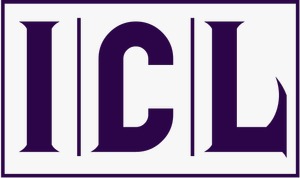Using Pictures in ELT Classroom for Developing Creative Writing
Keywords:
Pictures, Creative writing, ELT classroomAbstract
The research investigates the efficacy of using pictures as a teaching aid to enhance creative writing skills among secondary school students. It examines the impact of incorporating visual stimuli into the English language classroom compared to traditional teaching methods. Through experimental design and quantitative analysis, the study evaluates the writing performance of students exposed to picture-based instruction versus those taught using conventional techniques. Findings suggest that the use of pictures stimulates creativity, improves vocabulary acquisition, and enhances students' motivation and engagement in writing tasks. The research recommends the adoption of innovative teaching methodologies, such as integrating visual aids, to promote effective language learning and foster students' writing proficiency.
References
Abbott, P. H. (2002). The Cambridge Introduction to Narrative. Cambridge, Cambridge University Press.
Ahmed, S., & Rao, C. (2012). Inconsistencies in English language teaching in Pakistan: A comparison between public and private institutions. European Journal of Business and Management, 4(15), 95-105.
Azim, M. U., Hussain, Z., Bhatti, A. M., & Iqbal, M. (2020). ‘Observable Signals’ of Motivation in Teaching-Learning Process. Journal of Communication and Cultural Trends, 2(1).
Bashir Uddin, A. (2009). Learning English and learning to teach English: The case of two teachers in Pakistan, in Mansoor, S, Sikandar, A, Hussain, N, & Ahsan N. M. (eds.) Emerging Issues in TEFL Challenges for Asia, Oxford: Oxford University Press.
Bhatti, A. M., Abbas, F., & Rana, A. M. K. (2020). An empirical study of learning styles used by undergraduate English learners in public sector colleges in Pakistan. Elementary Education Online, 19(3), 1864-1875.
Bhatti, A. M., Hussain, Z., Azim, M. U., & Gulfam, G. Q. (2020). Perceptions of ESL learners and teachers on writing difficulties in English language learning in Lahore. International Bulletin of Literature and Linguistics, 3(3), 11-24.
Bhatti, A. M., Abbas, F., Azim, M. U., Hussain, Z., & Iqbal, M. (2021). Acquisition of Coordination Structure Constraint of graduate learners in Pakistani Public Sector Colleges. International Journal of Innovation, Creativity and Change, 15(3), 724-745.
Blagg, N. (1991). Can we teach Intelligence? Hillsdale, N.J: Lawrence Erlbaum Associates.
Brown, et.al. (1997). Audio Visual Instructions: Technology, Media and Methods. New York MC. Graw Hill Book Company.
Canning-Wilson, C. (2001). ‘Visuals and Language Learning: Is there a connection?’ The Weekly Column, article 48, February, retrieved from :
http://www.eltnewsletter.com/back/Feb2001/art482001.html
Cutler, L., & Graham, S. (2011). Primary grade writing instruction: A national survey. Journal of Educational Psychology, 100(4), 907-919.
Debes, J.(1969). Some how and whys to visual litracy Educational Sacreen and audio visual guide.
Dorothy E. Zemach and Lisa A Rumisek.(2003). College Writing from Paragraph to Essay, Macmillan publishers limited.
Dwyer, F. M. (1978). Strategies for Improving Visual Learning. State College, Pa: Learning. Services.
Eagle man, D. (2011). Incognito: The secret lives of the brain. New York, NY: Pantheon Books.
Eagleman, D. (2011). Incognito: The secret lives of the brain. New York, NY: Pantheon Books.
Fisher,R.(2012). Teaching writing: a situated dynamic .British Educational Research Journal, 38(2), 299-317.
Gerlach, V.S., Elly, D.P. (1980). Teaching and Media: A systematic approach. New Jersey Prentice Hall Inc. Grolund, Norman E.1976 measurement and Evaluation in teaching. New York Macmillan Publishing Co.
Grainger et al (2005, p. 14). Believes that creativity encompasses both individual and collaborative activities.
Grainger, T.Goouch, K., &Lambirth, A. (2005). Creativity and writing: Developing voice and verve in the classroom. London: Rutledge.
Grainger,T., Gouch, K., &Lambirth, A. (2005). Creativity and Writing: Developing voice and verve in the classroom. London: Rutledge.
Harmer, J. (2004). How to teach writing, Pearson Longman: New Delhi.
Harmer,J. (2004). How to teach writing. Pearson Education ESL.
Harwell, Charles W, Dorril, James F. (1976). Models and Methods: A Guide to Effective Composition. New Jersey: Prentice Hall Inc.
Herlina. (2000). Teaching English Vocabulary by Using Pictures. Unpublished Paper. Padang: Bung Hatta University.
Horstman, J. (2011). The Scientific American: Day in the life of your brain. San Francisco, CA: Jossey-Bass.
Hyland, K. (2002). Directives: Argument and engagement in academic writing. Applied Linguistics, 23(2), 215-239.
Shahzadi, K., Irfan, H., & Bhatti, A. M. (2022). Cultural and linguistic diversity in ESL learning to Pakistani university students: World English perspective. Jahan-e-Tehqeeq, 5(2), 239-249
Shahzadi, K., Irfan, H., & Bhatti, A. M. (2022). Fun activities in the learning process. Asia Journal of Management and Social Science, 1(02), 8-12.
Zaheer, H., Azim, M. A., Bhatti, A. M., & Gulfam, G. Q. (2021). The Sociolinguistic Impact of Sexist Hate Speech in Gender Discriminatory Pictorial Memes on Facebook. Competitive Social Science Research Journal, 2(4), 212–222.
Downloads
Published
How to Cite
Issue
Section
License

This work is licensed under a Creative Commons Attribution-NonCommercial-NoDerivatives 4.0 International License.

